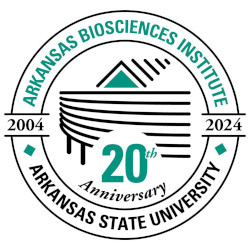Production and Secretion of Isowighteone in Hairy Root Cultures of Pigeon Pea (Cajanus cajan) Co-Treated with Multiple Elicitors
Document Type
Article
Publication Title
Plants (Basel, Switzerland)
PubMed ID
35336716
Abstract
Isowighteone (3’-isoprenyl genistein) is a prenylated stilbenoid derivative that exhibits neuroprotective, antibacterial, and anti-inflammatory properties. To establish a bioproduction system for this bioactive compound, hairy root cultures of pigeon pea (Cajanus cajan (L.) Millsp.) were developed via Agrobacterium rhizogenes-mediated transformation. The cultures were co-treated with methyl jasmonate, cyclodextrin, hydrogen peroxide, and magnesium chloride to enhance the production of isowighteone. The amount of isowighteone that accumulated in the culture medium upon elicitation varied with the period of elicitation. Isowighteone was purified from extracts of the culture medium by semi-preparative HPLC, and its identity was confirmed by tandem mass spectrometry. After 144 h of elicitation in 12-day-old hairy root culture, the total yield of isowighteone was 8058.618 ± 445.78 μg/g DW, of which approximately 96% was found in the culture medium. The yield of isowighteone in the elicited hairy root culture was approximately 277-fold higher than in the non-elicited root culture. The difference between the phenotypes of the elicited and non-elicited pigeon pea hairy roots was studied using scanning electron microscopy. The non-elicited hairy roots had uniform surfaces whereas the elicited roots had non-uniform shapes. Pigeon pea hairy roots provide a sustainable platform for producing and studying the biosynthesis of isowighteone.
DOI
10.3390/plants11060834
Publication Date
3-21-2022
Recommended Citation
Gajurel, Gaurav; Nopo-Olazabal, Luis; Hendrix, Emily; and Medina-Bolivar, Fabricio, "Production and Secretion of Isowighteone in Hairy Root Cultures of Pigeon Pea (Cajanus cajan) Co-Treated with Multiple Elicitors" (2022). Arkansas Biosciences Institute. 31.
https://arch.astate.edu/abi/31



Comments
A correction to this article is available at the publisher's website.